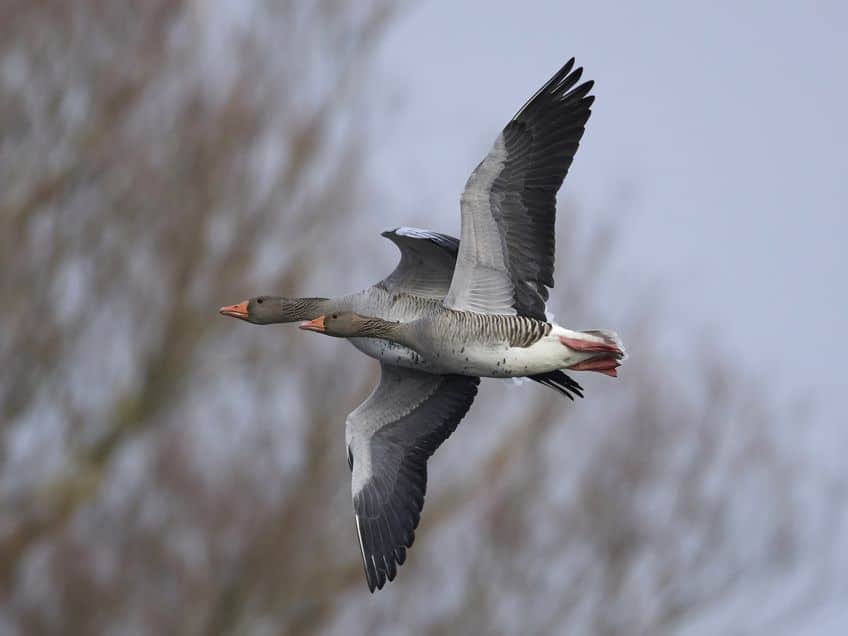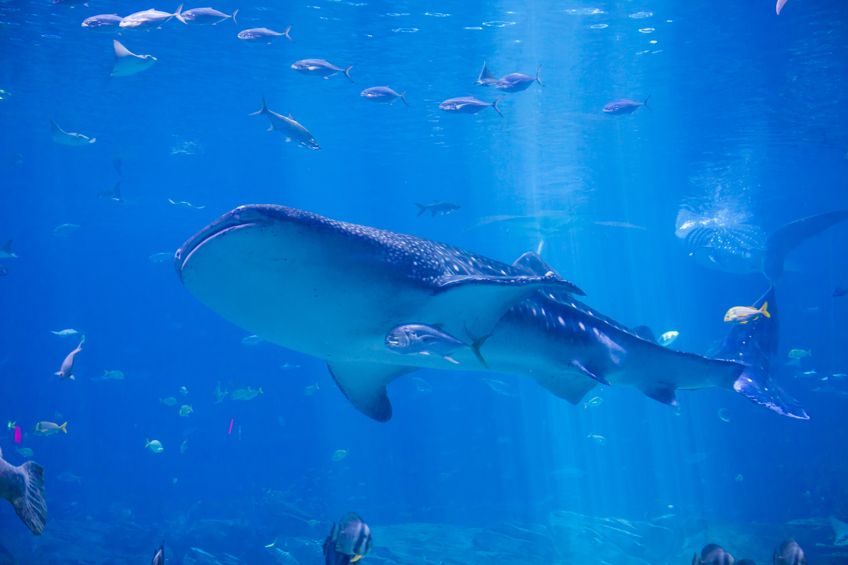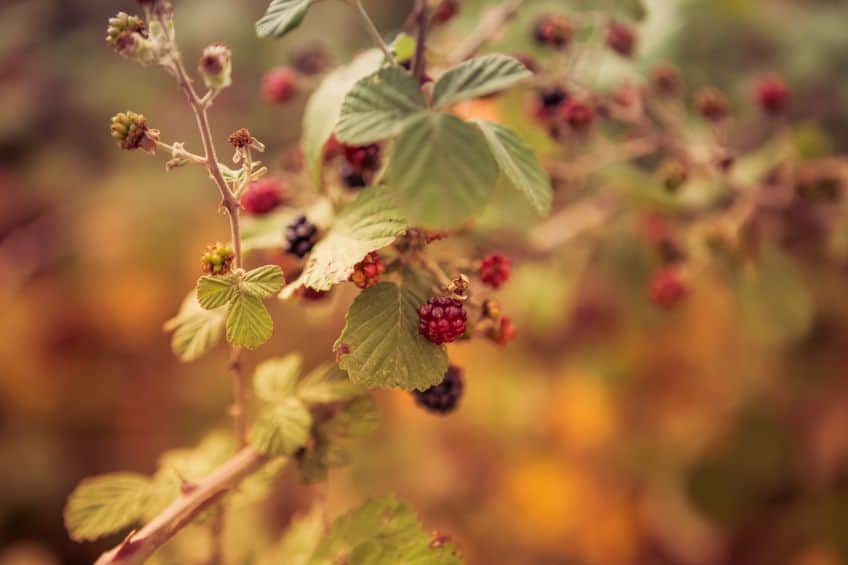Famous Mary Oliver Poems – Discover Her Greatest Works
There are many famous poets in the world, but many of the most famous poets are those who lived long ago. Mary Oliver, on the other hand, only passed away a few years ago at the time of writing, and her work would serve as some of the greatest of the latter half of the 20th century. This article will examine ten of the most famous Mary Oliver poems, and each will be explored in some level of depth. If this is something that you are interested in learning, then let’s get this underway and have a look at a few of the most famous Mary Oliver poems!
Famous Mary Oliver Poems
Mary Oliver is considered to be one of the greatest poets of the 20th century, and her work has become acclaimed, such as by winning the Pulitzer Prize for Poetry and the National Book Award. Her work would go on to inspire many others who would follow in her footsteps. She passed away in 2019 and left behind a rich and prolific array of poetry and essay collections, although she is best known for the poetry she produced rather than any of the essays.

Many of her poems focused on the natural world. This will be a common occurrence as we look at this list of some of the most famous Mary Oliver poems. Her love of and dedication to the natural world can be seen in her work, and a poem by Mary Oliver is often incomplete without some kind of a relation to the natural world. However, she did also explore topics like human nature, interconnectivity, and transformation. So, let’s have a look at some of the most famous Mary Oliver poems and see what makes them tick.
The Journey (1963)
| Date Published | 1963 |
| Type of Poem | Free verse |
| Rhyme Scheme | None |
| Meter | None |
| Topic | Taking charge of life |
The Journey is a poem by Mary Oliver that was originally published in her collection No Voyage and Other Poems. This particular collection was her first ever poetry collection and, as such, it has a special place in the history of Mary Oliver’s poetry collections. This makes The Journey one of the oldest poems written and published by Mary Oliver. This may have also contributed to it being one of the most famous Mary Oliver poems.
This particular poem is concerned with life. Many instances of poetry are concerned with a variety of aspects of life, but The Journey is specifically focused on the idea of taking charge of your own life.
It is about ignoring the kinds of voices and influences that might lead you astray or cause you to question yourself. Instead, the poem emphasizes listening to yourself and not heeding the voices of those around you. This can be seen in various parts of the poem, such as the third to fifth lines, which state that: “though the voices around you/kept shouting/their bad advice”. This shows how Mary Oliver examines the way in which those around us may continuously push their own ideas into our minds and attempt to force us to see things their way, but that “you knew what you had to do” and so you start to see through the noise of others to instead gaze inwards to understand what it is that you truly want over what they want from you.

Wild Geese (1986)
| Date Published | 1986 |
| Type of Poem | Free verse |
| Rhyme Scheme | None |
| Meter | None |
| Topic | Nature and transcendence |
Wild Geese is perhaps the most famous poem by Mary Oliver, and it was published in her Dream Work collection. This particular poem shows some of her greatest contributions to the field of nature poetry. Many of the most famous Mary Oliver poems are concerned with the natural world, and this particular poem is a phenomenal example of the kind of poetry for which Mary Oliver became so well-known.
The poem concerns itself with wild geese, as the title suggests. However, this is not simply to focus on wild geese alone.
Instead, this poem by Mary Oliver suggests a certain connection that may exist between wild geese and humans. This interconnectedness between humans and non-human animals is a staple of the work of Mary Oliver, and the poet makes use of this comparison to discuss the ways in which humans are quite like the geese that she observes in that they may be solitary creatures, yet they belong to a family.
The final few lines of the poem have become some of the most notable because of this. They examine the way in which humans, no matter how lonely they may be, are not quite as alone as they may appear. They, like the wild geese, are all part of the “family of things” that surrounds us all. We are all part of this world even when we may feel that we are disconnected from it. This kind of positivity can be found in many of the most famous Mary Oliver poems.

The Summer Day (1990)
| Date Published | 1990 |
| Type of Poem | Free verse |
| Rhyme Scheme | None |
| Meter | None |
| Topic | Nature |
The Summer Day is a poem that asks many questions. The poem was first published in the House of Light collection, and it has gone on to be one of the best poems by Mary Oliver. This particular poem makes use of a number of rhetorical questions, and it uses this to propose a certain way of living one’s life and attempting to understand what is around us. It does this, like many of the most famous Mary Oliver poems, by examining the natural world that can be found right outside our homes.
The poem asks questions such as who created the world, who made the various creatures around us, and what all is there to do in this world.
It pays particular attention to a grasshopper, and this grasshopper becomes the point of focus for these kinds of questions. It specifically questions the way that the grasshopper lives her life in comparison to the way that the speaker lives her life. The grasshopper appears capable of doing things that her human observer could never do.
The poem, for instance, examines the specific anatomy and behavior of the grasshopper, but it also does so by examining the lack of similar abilities in the human animal. It states that the human, through the eyes of the speaker, cannot hop into the grass like a grasshopper, cannot be content to remain idle all day and to simply hop throughout the place without the cares of a human. It ends by asking us about death. Will what we have done be seen as good enough after we are gone? Has she done enough? We only have “one wild and precious life”, so what are we going to do with it?

Dogfish (1992)
| Date Published | 1992 |
| Type of Poem | Free verse |
| Rhyme Scheme | None |
| Meter | None |
| Topic | Brutality of nature |
Dogfish is a darker poem than some of the most famous Mary Oliver poems, but it is also a stunning example of her dedication to an understanding and appreciation of the natural world. For those unfamiliar with dogfish, they are a type of shark, although they are not as large as the kinds of sharks that we tend to associate with the term. And a poem that concerns itself with a shark is also one that likely concerns itself with the kind of danger that they pose to the creatures around them.
Dogfish are generally not large enough to present much of a threat to humans, and in the poem, the speaker feels no threat from them.
Instead, the poem examines the threat that these creatures pose to others. However, the poem examines this danger while also drawing particular attention to the mentality of the human who is observing these creatures. At first, the poem focuses on the beauty of the dogfish, but that soon changes when three other fish enter the scene.
These three other fish are swimming around, and the dogfish is coming towards them. The dogfish would easily be able to eat and kill every single one of them, and it is described in the poem as something effortless. The speaker does not want this to happen and thinks that “those little fish/better wake up and dash themselves away” before they meet a “hopeless future”. This kind of hopeless future is also one that the speaker fears, but if the fish can escape their fate, then perhaps the speaker can also escape her own.

When Death Comes (1992)
| Date Published | 1992 |
| Type of Poem | Free verse |
| Rhyme Scheme | None |
| Meter | None |
| Topic | Death and life |
When Death Comes is a poem by Mary Oliver that was published in her highly acclaimed collection New and Selected Poems, and this particular poem is concerned with life and death. It does so through the use of a variety of similes that directly compare the life of the speaker to various aspects of the natural world. These aspects are not considered to be those that are particularly positive in any sense of the word. However, the ultimate musing of the poem is a hopeful one.
The poem uses many different similes throughout its first half, such as death coming because of a hungry bear or measles.
This death image is directly connected to aspects of nature such as this. They are often dark and grisly ways to die, and the phrase “when death comes” is repeated throughout the poem. This phrase is also the title of this poem by Mary Oliver, and the constant repetition of this phrase reinforces that the focus is on death and the inevitability of it. It does not say if death comes, but when death comes.
However, for all the negative imagery of death and dismay, the poem is also concerned with the positives that may arise out of this immense sadness. The poem fixates on “when it’s all over” in the last few stanzas, and it does this to ultimately conclude with the idea that “I don’t want to end up simply having visited this world”. Death may come, but she does not want to leave this world having done nothing. She wants to have done something with her life, something good, something meaningful. This is likely a feeling that many can understand.

August (1993)
| Date Published | 1993 |
| Type of Poem | Free verse |
| Rhyme Scheme | None |
| Meter | None |
| Topic | Life of a bear |
August is one of the most famous Mary Oliver poems and a stunning example of a purely animalistic poem that does not concern itself with humans in any sense. Instead, it is solely focused on the life of a bear. This particular bear is also enjoying itself as it eats blackberries. That is what the poem is about, and that is all that it truly needs to be about, but one of the more interesting formal aspects of this poem is that it makes use of enjambment between stanzas. This means that each stanza runs into every other stanza as if there was no pause between them.
Each stanza, thanks to this flow, does not much stand on its own and instead focuses on a continuous narrative about this poem.
It describes the way in which the bear eats berries that do not belong to anyone, and the bear spends the whole day taking more and more berries as they are pushed into his mouth, and that this is a lovely thing. The poem also ends with the delightful image of the bear’s now black tongue as it states that it is a “happy tongue” because of all the tasty blackberries that were eaten.
However, other than this simple story, the poem also says something very interesting in the second-last stanza by stating that the bear “accepts what it is”. This kind of self-acceptance is one that humans often struggle to grasp. The bear does not need to concern himself with the kinds of fears and worries that humans perpetually allow themselves to be concerned with. The bear simply lives his life, and he lives its life while doing what he loves: eating. What could be better than that?

Starlings in Winter (2006)
| Date Published | 2006 |
| Type of Poem | Free verse |
| Rhyme Scheme | None |
| Meter | None |
| Topic | Life and nature |
Starlings in Winter is a poem by Mary Oliver that examines life and the natural world around us, and it is one of the poems from the stunningly named collection, Owls and Other Fantasies: Poems and Essays. This particular poem makes use of the imagery of starlings in winter, as the title suggests, and uses this to examine ideas such as grief, resilience, and freedom. The poem is one of the most famous Mary Oliver poems from the 21st century.
While many Mary Oliver poems are concerned directly with the natural world, this poem makes immediate use of human imagery alongside animal imagery.
The very first stanza looks at the way that the starlings, a natural creature, stands on and springs off a telephone wire, a human-made thing. The beauty of natural creatures can transcend the constraints of the human and animal worlds. The beauty of nature can be found where nature may no longer exist in an untainted capacity.
The poem focuses on the way that they are “acrobats/in the freezing wind”, the way that they fly over and around buildings despite the freezing cold. They are free as they soar through the air and make their way through the world in a way that they see fit. After this image, the poem returns to the human who is reflecting on these animals that flap their way through the cityscape, and they remind her that even in the city, there are lessons from the natural world and that there is much for us to learn.

The Uses of Sorrow (2007)
| Date Published | 2007 |
| Type of Poem | Free verse |
| Rhyme Scheme | None |
| Meter | None |
| Topic | Human consciousness |
The Uses of Sorrow is one of the best short Mary Oliver poems ever produced, and it is a simple thing that was published in the Thirst collection. This particular poem is short, but poignant regardless of that. It starts with an epigraph about where the poem’s inspiration came from, and it came from dreams. This already gives it an ethereal kind of inspiration, and the fact that the inspiration is stated at all is a rather strange and unusual thing.
After this first line, the poem only makes use of two couplet stanzas.
The first of which states that there was someone who loved her and gave her a box of darkness, and that is likely a metaphor for a particular way of being. It could represent something disturbed or unhealthy. The use of the expression “someone I loved once” also indicates that this is not someone who continues to be an object of her affection.
The final stanza says that it took “years to understand” that this darkness she received was also “a gift”. This immensely short poem by Mary Oliver shows the ways in which the “darkness, which could be a representation of trauma of some kind, is part of what makes us into what we become later in life. Even the darkest moments of our lives have something to give us, even if what they give us is something that we may wish, at the moment, was never given to us. In retrospect, we may see it as a gift of sorts, but at the time, we cannot see it that way at all.

The Swan (2010)
| Date Published | 2010 |
| Type of Poem | Free verse |
| Rhyme Scheme | None |
| Meter | None |
| Topic | Change and beauty |
The Swan is one of the latest poems in this list by Mary Oliver, and it is concerned with ideas surrounding change and beauty. In more specific terms, it makes use of the image of a swan. It is a highly descriptive poem that spends much of the time examining a particular poem through a series of questions that are presented to the reader through a series of lines that feature enjambment. This means that each of the lines flows into the next line without requiring a pause of any kind between them.
The poem opens by asking us if we also saw “it” as it drifted on the river at night.
We do not yet know what it is, aside from our fundamental understanding that comes from the title of the poem itself. After the night-time image of the creature, it asks if we saw it in the morning. The swan is soon described, but never actually named. The title of the poem and the descriptions that are presented should be enough for us to be able to identify the creature that has become the object of examination in this poem.
However, the image of the swan is only there to evoke an idea within us. The reader, or the one to whom the speaker addresses, switches to asking if we can feel it in our hearts. The speaker asks if we have “finally figured out what beauty is for” and if it has “changed your life”. These kinds of questions are meant to be provocative things that force us to question our own ideas of beauty, its purpose, and whether our lives have been affected and changed by seeing something that is so supremely and naturally stunning.

Don’t Hesitate (2017)
| Date Published | 2017 |
| Type of Poem | Free verse |
| Rhyme Scheme | None |
| Meter | None |
| Topic | Joy |
Don’t Hesitate is the last poem on this list of famous Mary Oliver poems. In the case of this particular poem, it is a celebration of life and joy. It is a poem that tells the reader that they need to seize the day, that they need to take life by the horns and do what needs to be done to make them happy. It does not matter what others consider to be important or anything else. All that matters is that you do what you want to do in your life.
The poem starts by saying that if you feel joy, you shouldn’t hesitate against it.
You should “give in to it”, because many people, when they are happy, will question why that is the case. However, this fantastic poem by Mary Oliver denies that. It instead says that we should not care about something like that. We should embrace what we want in this life with everything that we have.

The poem looks at how life can be redeemed even when it has sunk to terrible depth, and nothing is proceeding as one may wish it to proceed. It states that even when “much can never be redeemed” that “life has some possibility left”, and that is worth pursuing. For a final poem in this list of famous Mary Oliver poems, it’s great that this one should be about something so positive against some of the darker poems that have since been explored.
We have examined a number of different long and short Mary Oliver poems over the course of this article, and we discussed each of these poems in some depth to give a good overview of the kind of work that Mary Oliver produced. Mary Oliver was one of the greatest poets of the second half of the 20th century and the early years of the 21st century, and her influence cannot easily be measured. Hopefully, this list of the most famous Mary Oliver poems has provided a good selection of the kind of work that she produced, but there are many other Mary Oliver poems out there that are also worth reading.
Frequently Asked Questions
Who Was Mary Oliver?
Mary Oliver was an American poet who was born in 1935 and passed away in 2019. Her work was often inspired by the natural world. She was considered to be one of the bestselling poets of her generation, and thanks to the wide circulation of her work, she came to be considered one of the greatest poets of the second half of the 20th century and the early years of the 21st century. She also won a variety of awards for her work over her long and illustrious career.
What Themes Did Mary Oliver Usually Explore?
Many long and short Mary Oliver poems explored a number of topics. The most common topic that she explored was the natural world. Much of her work was concerned with nature, but themes such as life, the human experience, death, and the interconnectedness of the world became other common themes. These themes often intermingled with her broader interest in the natural world.
Which Are the Most Famous Mary Oliver Poems?
There are many famous Mary Oliver poems that are worth our time and attention, but some of the most famous of them all include Wild Geese (1986), The Summer Day (1990), and August (1993). However, she produced many poetry collections over the course of her life and career, and many of those collections are also worth reading and analyzing. Many of these poems were concerned with the broader theme of the natural world, which was prevalent in her work.
What Type of Poetry Did Mary Oliver Write?
While Mary Oliver did write poetry in a number of different forms, she is perhaps best known for her use of free verse poetry. This particular type of poetry is noted for its lack of conformity to many of the standard rules of poetry that are often considered to be immensely important. This lack of rigid structures allowed Mary Oliver to produce some fantastic poems throughout her career that could be highly variable in their general structure and presentation.
Did Mary Oliver Only Write Poetry?
While Mary Oliver is most known for her poetry, she did not only produce poetry during her life. Other than poetry, she was known for producing a number of non-fiction texts, such as essay collections. Her essays explored a number of different topics, but they are not generally considered the reason that many know her work. However, her mastery of many different formats has led to her being seen as a phenomenal writer of poetry and prose.
Which Poets Inspired Mary Oliver?
One of the biggest influences on Mary Oliver was Edna St. Vincent Millay. A variety of other poets would also have a major influence on the development of the many long and short Mary Oliver poems that she produced throughout her life. Some of those other poets include Walt Whitman, Elizabeth Bishop, and John Muir. Her work has gone on to be an inspiration to many others.
Which Awards Did Mary Oliver Win?
Mary Oliver was considered to be a critically acclaimed poet, and she won a number of awards during her career. For instance, she won general awards like the Lannan Literary Award in 1998, but she also won several specific awards for texts that she had written, such as the 1984 Pulitzer Prize for Poetry for her American Primitive collection, and the 1992 National Book Award for Poetry for her New and Selected Poems collection.
Justin van Huyssteen is a freelance writer, novelist, and academic originally from Cape Town, South Africa. At present, he has a bachelor’s degree in English and literary theory and an honor’s degree in literary theory. He is currently working towards his master’s degree in literary theory with a focus on animal studies, critical theory, and semiotics within literature. As a novelist and freelancer, he often writes under the pen name L.C. Lupus.
Justin’s preferred literary movements include modern and postmodern literature with literary fiction and genre fiction like sci-fi, post-apocalyptic, and horror being of particular interest. His academia extends to his interest in prose and narratology. He enjoys analyzing a variety of mediums through a literary lens, such as graphic novels, film, and video games.
Justin is working for artincontext.org as an author and content writer since 2022. He is responsible for all blog posts about architecture, literature and poetry.
Learn more about Justin van Huyssteen and the Art in Context Team.
Cite this Article
Justin, van Huyssteen, “Famous Mary Oliver Poems – Discover Her Greatest Works.” Art in Context. October 26, 2023. URL: https://artincontext.org/famous-mary-oliver-poems/
van Huyssteen, J. (2023, 26 October). Famous Mary Oliver Poems – Discover Her Greatest Works. Art in Context. https://artincontext.org/famous-mary-oliver-poems/
van Huyssteen, Justin. “Famous Mary Oliver Poems – Discover Her Greatest Works.” Art in Context, October 26, 2023. https://artincontext.org/famous-mary-oliver-poems/.










I am Michael Wms. Glockner, moving toward my 83rd. B-day. Born and raised in Ohio; Ordained at Notre Dame University on 4 APR 1970; resigned and retired about 14 years ago; since then lived alone, except for a cat, now a large Main Coon. And now, for a year, with Alex, whom I met a year ago, on the hottest week of that summer; living in his car–exiled by some who thought he needed to learn to become “more responsible.” Willing to work hard, and get dirty working on vehicles, as his Father does. Different worlds; still a gift to one another, when he is not working or with his girlfriend. Somehow, I gathered in Vol’s I and II, and Red Bird. Reading, “singing” them [as Robert Bly recommended, strongly] for a month or so now. At the end of Snow Geese I reclined a bit in my chair, as has often been the case, to allow tears to flow as they might, much more so than usual. I SO wanted to write and thank Mary! Here I learned of Mary Oliver’s death. I have a cousin who is deeply involved in Respect Life. For years I have written/encouraged: “Respect the Web of Life”. I will continue to write to Mary Oliver today, in my mind and heart.